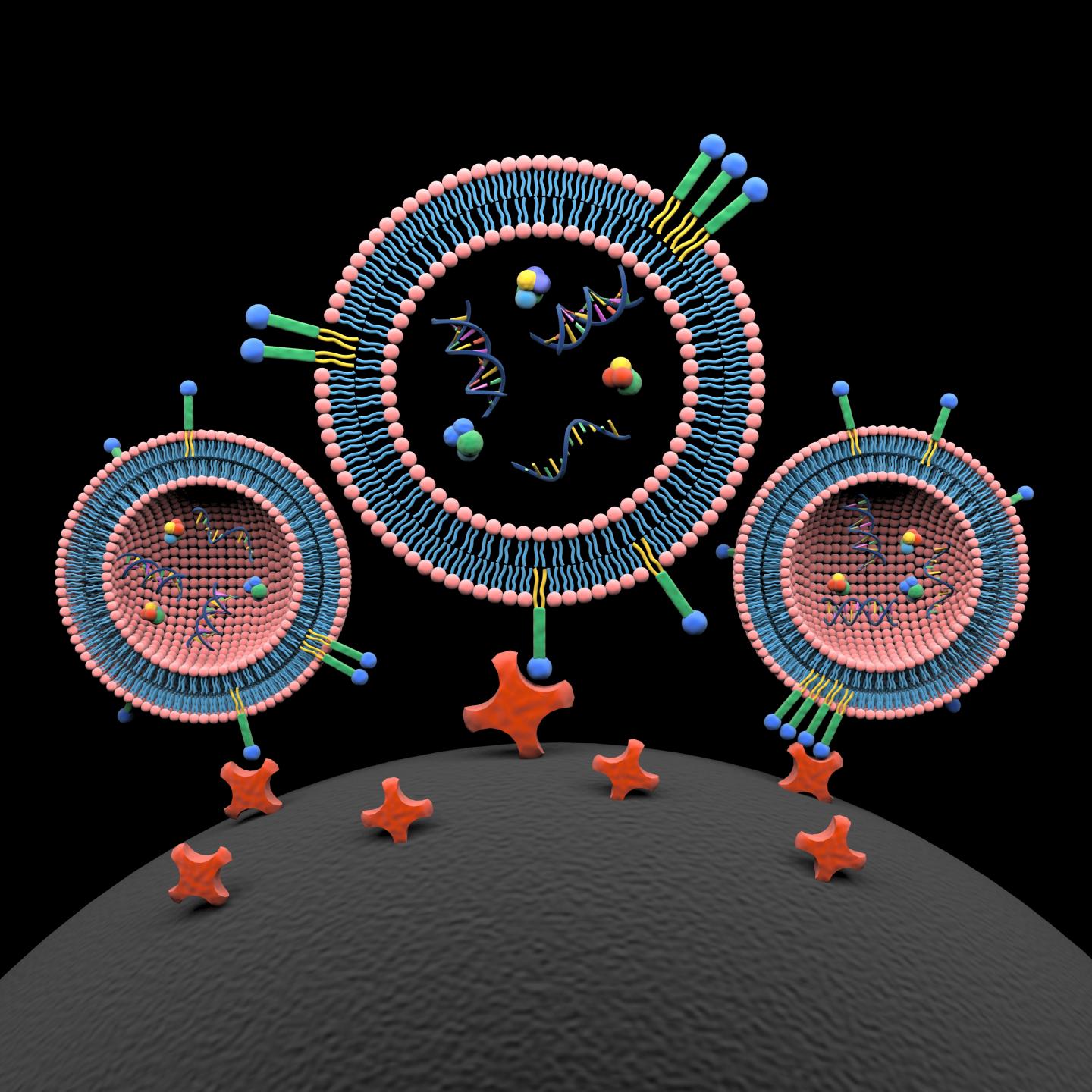
Credit: Xin Zou/Penn State
A nanoscale product of human cells that was once considered junk is now known to play an important role in intercellular communication and in many disease processes, including cancer metastasis. Researchers at Penn State have developed nanoprobes to rapidly isolate these rare markers, called extracellular vesicles (EVs), for potential development of precision cancer diagnoses and personalized anticancer treatments.
"Most cells generate and secrete extracellular vesicles," says Siyang Zheng, associate professor of biomedical engineering and electrical engineering. "But they are difficult for us to study. They are sub-micrometer particles, so we really need an electron microscope to see them. There are many technical challenges in the isolation of nanoscale EVs that we are trying to overcome for point-of-care cancer diagnostics."
At one time, researchers believed that EVs were little more than garbage bags that were tossed out by cells. More recently, they have come to understand that these tiny fat-enclosed sacks — lipids — contain double-stranded DNA, RNA and proteins that are responsible for communicating between cells and can carry markers for their origin cells, including tumor cells. In the case of cancer, at least one function for EVs is to prepare distant tissue for metastasis.
The team's initial challenge was to develop a method to isolate and purify EVs in blood samples that contain multiple other components. The use of liquid biopsy, or blood testing, for cancer diagnosis is a recent development that offers benefits over traditional biopsy, which requires removing a tumor or sticking a needle into a tumor to extract cancer cells. For lung cancer or brain cancers, such invasive techniques are difficult, expensive and can be painful.
"Noninvasive techniques such as liquid biopsy are preferable for not only detection and discovery, but also for monitoring treatment," says Chandra Belani, professor of medicine and deputy director of the Cancer Institute, Penn State College of Medicine, and clinical collaborator on the study.
"We invented a system of two micro/nano materials," Zheng says. "One is a labeling probe with two lipid tails that spontaneously insert into the lipid surface of the extracellular vesicle. At the other end of the probe we have a biotin molecule that will be recognized by an avidin molecule we have attached to a magnetic bead."
The surface-modified magnetic beads are 400 to 500 nanometers in diameter and the labeling probes is on the order of 10 nanometers. When the system is optimized, the researchers can isolate the EVs from blood plasma samples in about 15 minutes. The EVs and their contents can then be analyzed in a lab setting or sent to a commercial diagnostic lab to characterize the DNA, RNA and proteins.
In a paper published online today, April 10, and as the cover article for April in Nature Biomedical Engineering, lead author Yuan Wan, a postdoctoral researcher in Zheng's lab, describes using the nanoprobes to capture EVs from the blood plasma of 19 patients with non-small-cell lung cancer.
"Aided with this new approach, we successfully isolated EVs from 19 patients with advanced lung cancer and identified DNA mutations that can guide precision therapy instead of routine chemotherapy," Wan says. "From collecting blood to obtaining EV-derived DNA, the whole procedure can be completed within one hour. It only requires a magnet and a common benchtop centrifuge. Compared to prevalent methods, the nanoprobe system would greatly facilitate clinical laboratory examination."
Because the technology requires only materials and an external magnet, it is relatively inexpensive and fast compared to the current gold standard of separation, called ultracentrifugation, which requires expensive equipment and takes hours to complete.
Once validated in a larger study, Zheng and Belani believe that this technique can be applied not only to lung cancer but also to most if not all solid tumors, which are responsible for 80-90 percent of cancer deaths.
"Sequencing the DNA isolated from the EVs will serve as a promising tool to track cancer evolution and monitor tumor dynamics with the ultimate goal of improving cancer survival," Belani concludes.
###
In addition to Zheng and Belani, Wan's coauthors on the article, titled "Rapid isolation of extracellular vesicles via lipid nanoprobes," include Xin Liu and Shawn Rice in Belani's lab; Istvan Albert, professor of bioinformatics in the Department of Biochemistry and Molecular Biology and the Huck Institutes of the Life Sciences; Aswathy Sebastian, a computational scientist in Albert's lab; and Gong Cheng, Si-Jie Hao, Merisa Nisic, Chuan-Dong Zhu, Yi-Qiu Xia, Wen-Qing Li, Zhi-Gang Wang and Wen-Long Zhang, graduate students and postdoctoral researchers in Zheng's lab.
The National Cancer Institute of the National Institutes of Health and Penn State supported this work. Siyang Zheng is a faculty member of the Penn State Materials Research Institute, Huck Institutes of the Life Sciences and Penn State Cancer Institute.
Media Contact
A'ndrea Elyse Messer
[email protected]
814-865-9481
@penn_state
http://live.psu.edu
############
Story Source: Materials provided by Scienmag





